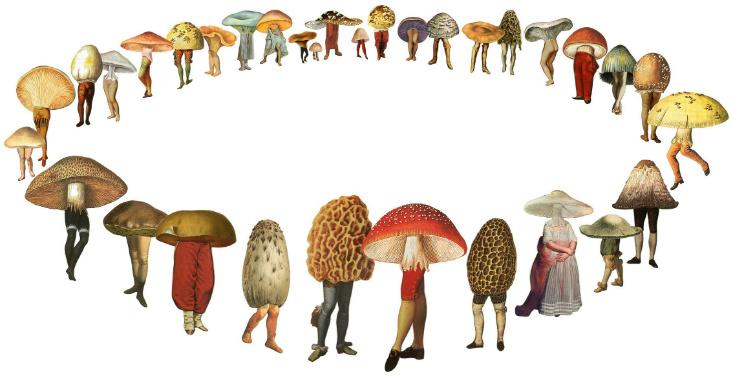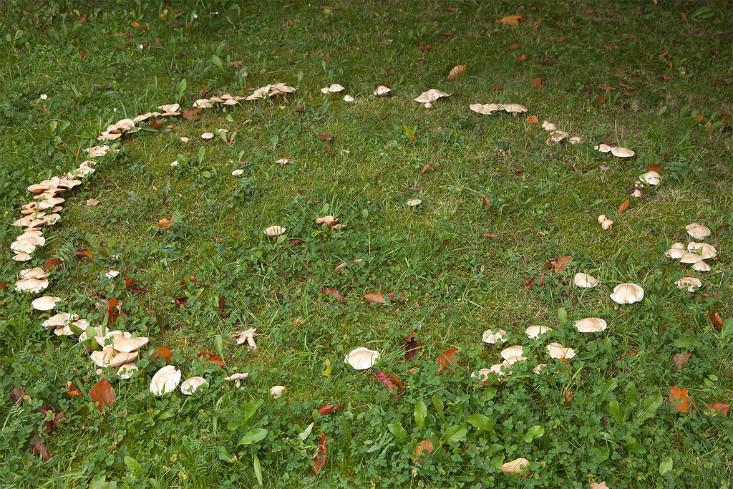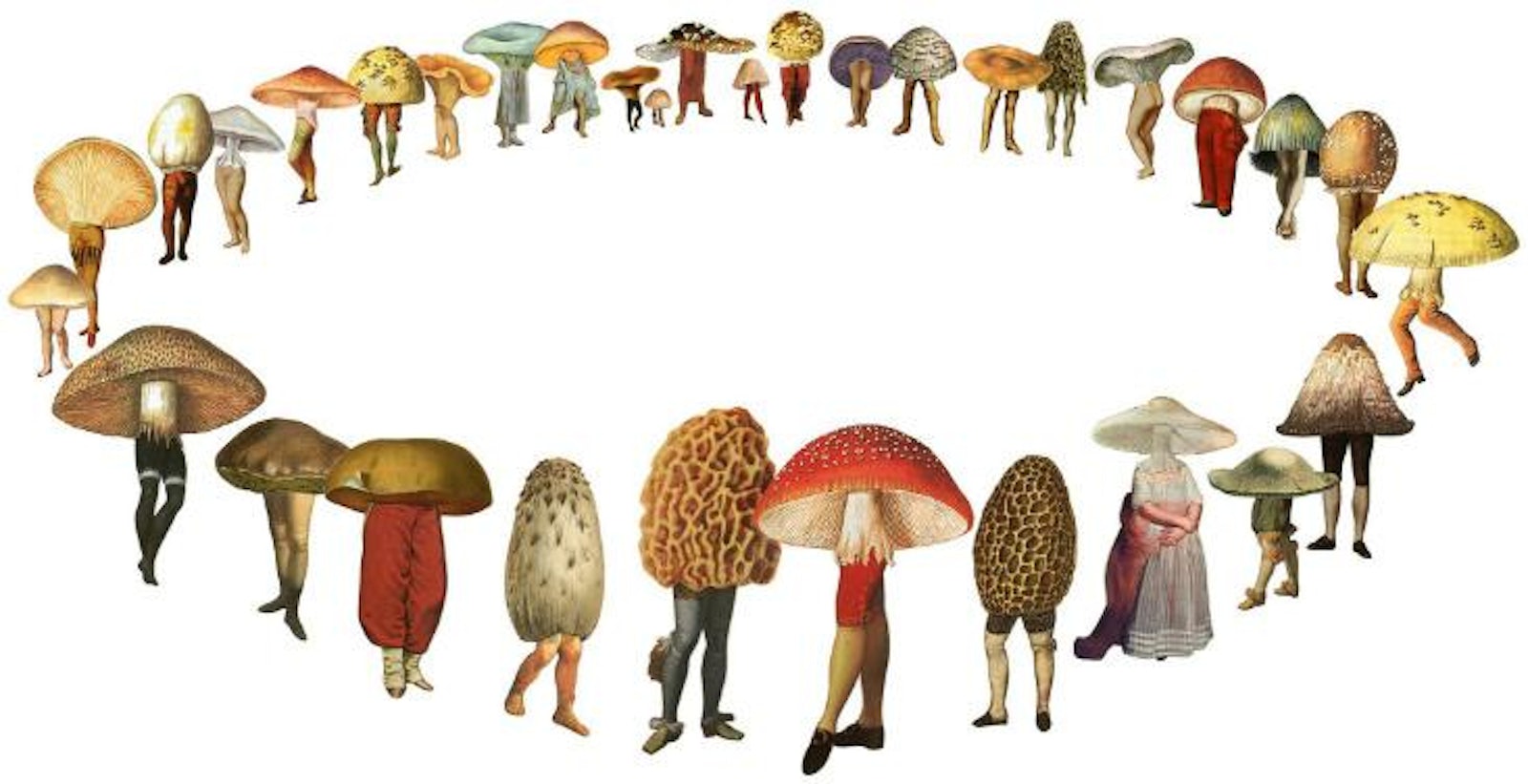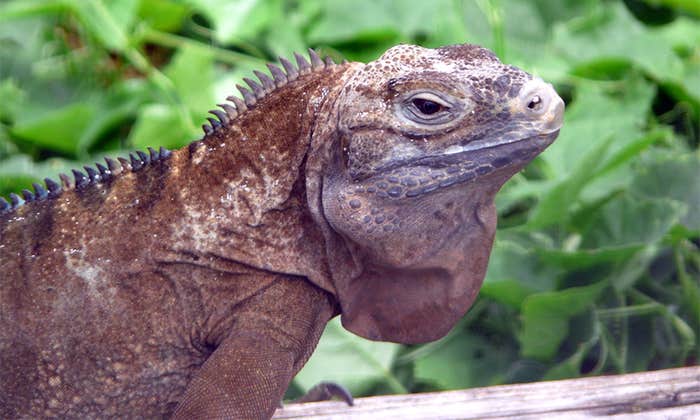
The front lawn is an American symbol of middle-class status and respectability. We trim ours with ride-on mowers, condition them with nitrogen, and hydrate them with elaborate sprinklers, largely because they represent us to everyone driving by. Ironically, it’s due to this energetic maintenance that one pest thrives within the coddled haven just outside our homes.
The pest, or rather collection of pests, is the “fairy ring”—a group of mushrooms that forms an oddly precise circle. These rings weren’t always an unwanted nuisance. Once, they were even thought to possess a certain magic. According to European folklore, each ring contains tiny winged creatures that party within its perimeter each evening. One old Welsh story even warned passersby against stepping into a ring, as violators would be condemned by the fairies within to a lifetime of invisibility.
Of course no one has ever seen these groups of reveling fairies, but as homeowners know, the rings themselves are quite real. They’re a fungal phenomenon with a fascinating biological explanation.

In 1792, English physician William Withering pulled out a pocket microscope he invented and examined unearthed fairy rings. What Withering saw was a network of interconnected white threads beneath the mushrooms. Each mushroom within the circle was in fact, a part of the same underground organism. This discovery makes sense if you think of each mushroom the same as you would an apple on a tree. Mushrooms are the fruiting bodies of a fungus, whose main mass, the mycelium, lives underground. As with any plant and its fruit, the mycelium produces mushrooms as a vessel of reproduction. Under each mushroom’s cap, gills carry spores ready to be carried away with the wind and begin separate lives.
Before it can fruit, the mycelium first spreads its veiny body outward, sucking up nutrients from the surrounding soil. (This sometimes leaves the area with less nutrients, killing nearby grass.) Once the fungi has absorbed enough nutrients, its mushrooms push skyward and break through the soil at the structure’s outer edges.
In natural forest conditions, the mycelium branches out unevenly, reaching for unevenly distributed patches of nutrients. The strange ring shape appears only when nutrients are perfectly distributed throughout the earth, most often in somebody’s front lawn. “It’s sort of like the growth rings on trees, where the growth starts at a center point,” says New York mushroom expert David Fischer. “The more homogeneous the nutrients, the more perfect the circle.” If the mycelium found nutrients in just one direction, out pops half a circle of mushrooms. “Sometimes we’ll just find a fairy arc or a fairy line, so to speak,” says Fischer.
Charming as they are, fairy rings can lose their magic when rooted outside your home. Because they’re renowned as difficult to eradicate, suburban ring-haters have devoted countless online pages to removal tricks. One simple approach: Harvest the mushrooms and eat them. But be careful—even if you don’t turn invisible, the ring fairies may exact a different revenge: Some ring-forming mushrooms are poisonous. While you’re researching if your circle of fungi is an edible variety, take a minute to think why that ring is comfortably nestled outside your house in the first place. You’ve created ideal conditions for it to prosper: More fertilizer lends a more perfectly formed pest. So, perhaps next spring, lay off the Miracle-Gro.
Becca Cudmore is a science writer based in Brooklyn. She studied biological anthropology at University of Oregon and is currently a graduate student in science journalism at New York University.




























